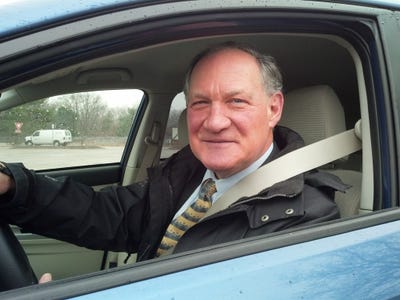Car Dealers Offering Too Much Can Befuddle Shoppers
Confused consumers usually aren’t in a buying mood.

MOUNTAIN VIEW, CA – Offering the proverbial “largest selection of vehicles” can backfire on dealerships if customers feel overwhelmed by it all, says Neil Hoyne, Google’s head of customer analytics.
According to conventional wisdom, dealers displaying acres of inventory provide more to pick from and consequently increases sales. But it can work the opposite.
“By giving people more choices, they can get confused and end up buying less,” Hoyne tells dealers attending Cox Automotive’s 2015 Digital Summit at the so-called “Googleplex,” the search-engine giant’s sprawling headquarters here.
The more-is-worse phenomenon applies elsewhere in automotive sales and marketing.
For instance, online car-configurator tools are designed to let consumers pick from assorted offerings – including trim levels, paint colors and aftermarket add-ons – to “build” a car to their specifications. That gives them a digital representation of their potential purchase.
But some configurators ask too much, Hoyne says, pointing to one, “Build a Corolla.” It asks users up to 60 questions as they customize their cyber vehicle.
“You’d think they’d love it, but by the time they’re through with the process, they’re fatigued,” he says, citing Google analytics.
That’s assuming they make it to the end. Some quit before the 60th question.
In contrast, shoppers seem to like configurators offering default categories based on popular choices. It pares the selection process.
“People end up spending almost $2,000 more on a vehicle when choices were opted in for them,” Hoyne says. “Defaulting is easier for them than having to make too many choices.”
Google analytics has detected another anomaly that at first seems good but actually is bad. It involves high click rates. Under ideal circumstances, those are website positives.
Not always though. “If your site makes it more difficult for people to find what they are looking for, and they go through a lot of pages because of that, your click rate might go up,” Hoyne says.
But so will customer frustration, not an ideal state of mind to put a car shopper in. An engaged customer efficiently clicking towards a purchase is one thing. An irked user stumbling through a clunky website is something else.
Hoyne shares two other Google findings from its automotive-market tracking.
One, digital display ads particularly influence shopping behavior earlier in the deliberation process.
Two, consumer polls preferably offer multiple-choice options rather than ask open-ended questions. The latter can elicit weird responses.
Hoyne recalls a survey that asked: “When you buy your next vehicle, what will it be?”
Replies included a Schwinn bike, Boeing plane and “That question is a disgrace to America.”
About the Author
You May Also Like

